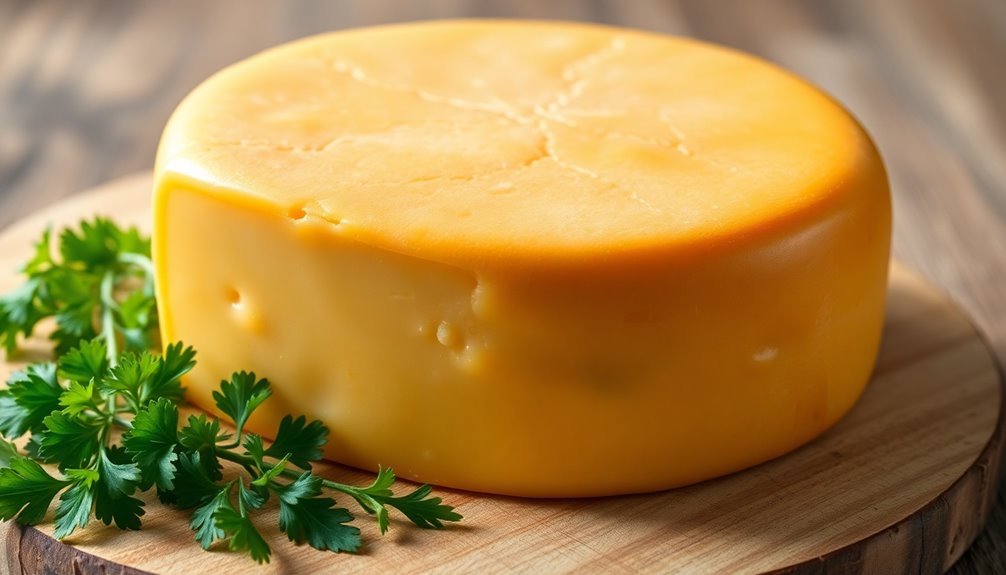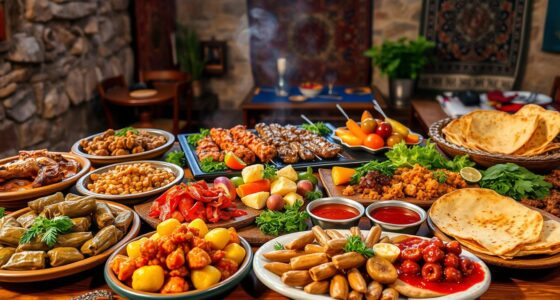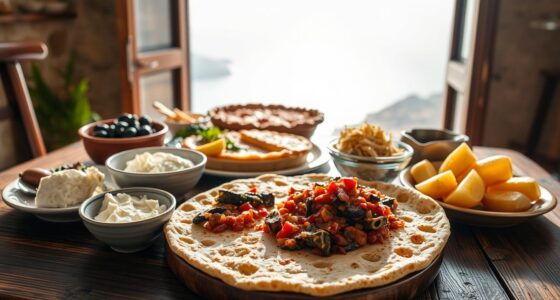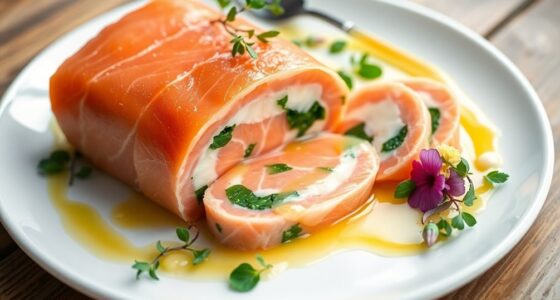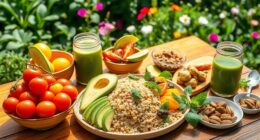Gouda cheese, named after its trading city, has a rich history dating back to the Middle Ages. With a semi-hard texture, its flavor can range from mild and creamy to rich and caramel-like as it ages. It's perfect for cheese boards, melting in dishes, or enjoying with fruits and nuts. Packed with calcium and protein, it's a nutritious choice too. Stick around, as there's so much more to discover about this delightful cheese!
History
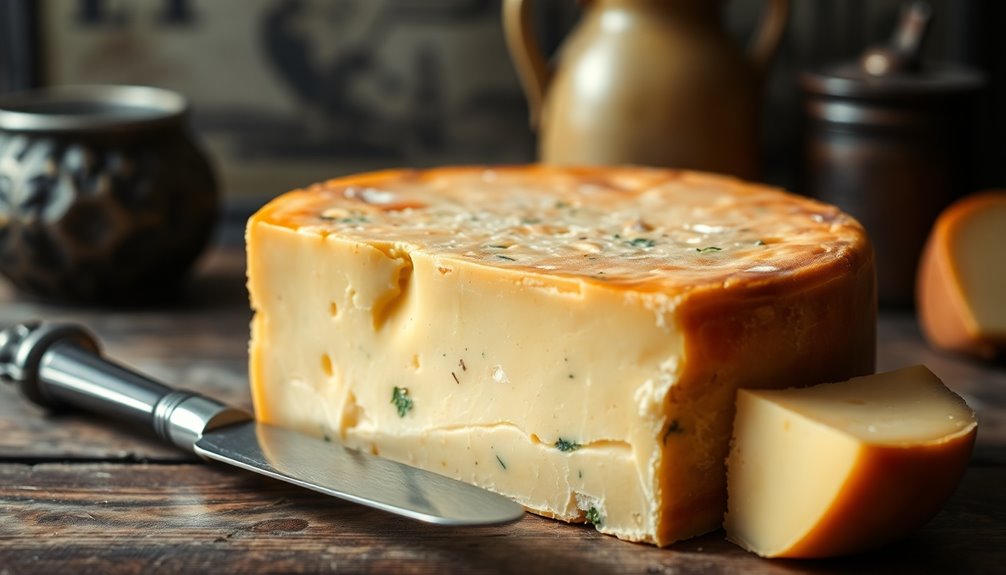
Gouda cheese, named after the city where it was historically traded, has a rich history that dates back to the Middle Ages.
The city of Gouda in South Holland became a hub for cheese trade, acquiring market rights that facilitated its growth. Unique bargaining rituals, like handjeklap, characterized the cheese market, while cheese-porters wore colorful straw hats to stand out.
During the Dutch Golden Age in the 17th century, Gouda cheese evolved, reflecting the Netherlands' vibrant cultural heritage.
Fast forward to December 2010, and Gouda cheese gained protected status within the EU, which ensures its authenticity and quality. Recognized designations like Gouda Holland PGI and Noord-Hollandse Gouda PDO further protect its production methods and origin, safeguarding its legacy.
Recipe

Gouda cheese isn't only delicious but also incredibly versatile, making it a perfect choice for a gourmet grilled cheese sandwich. This recipe pairs the creamy richness of Gouda with the natural sweetness of apples, creating a delightful balance of flavors. The melted cheese, combined with the crisp texture of toasted bread and the juicy bite of apple, results in a comforting yet sophisticated dish that's sure to impress.
To start, choose a good quality Gouda cheese, preferably aged, to enhance the depth of flavor in your sandwich. The combination of buttery bread and Gouda will create a crunchy exterior with a gooey, melty interior. This dish is perfect for lunch or a cozy dinner, and it can also be served as a delightful appetizer at gatherings.
Ingredients
- 4 slices of good quality bread (sourdough or whole grain)
- 4 ounces Gouda cheese, sliced
- 1 apple (such as Granny Smith or Honeycrisp), thinly sliced
- 2 tablespoons butter
- Salt and pepper to taste
Cooking Instructions
Heat a skillet over medium heat and melt 1 tablespoon of butter in the pan. Assemble the sandwich by placing a slice of bread in the skillet, adding half of the Gouda cheese, a layer of apple slices, and the remaining Gouda cheese on top.
Place the second slice of bread on top and press down gently. Cook for about 3-4 minutes until the bread is golden brown and the cheese starts to melt. Carefully flip the sandwich, adding the remaining tablespoon of butter to the pan, and cook for another 3-4 minutes until the other side is golden and the cheese is fully melted.
Remove from the skillet, slice in half, and serve warm.
Extra Tips
For an added layer of flavor, consider drizzling a bit of honey or sprinkling some cinnamon on the apple slices before assembling the sandwich. This will enhance the sweetness of the apples and complement the nuttiness of the Gouda.
Additionally, if you're feeling adventurous, you can experiment with different types of bread or add other ingredients like arugula or caramelized onions for a gourmet twist. Enjoy your delicious Gouda and apple grilled cheese!
Cooking Steps
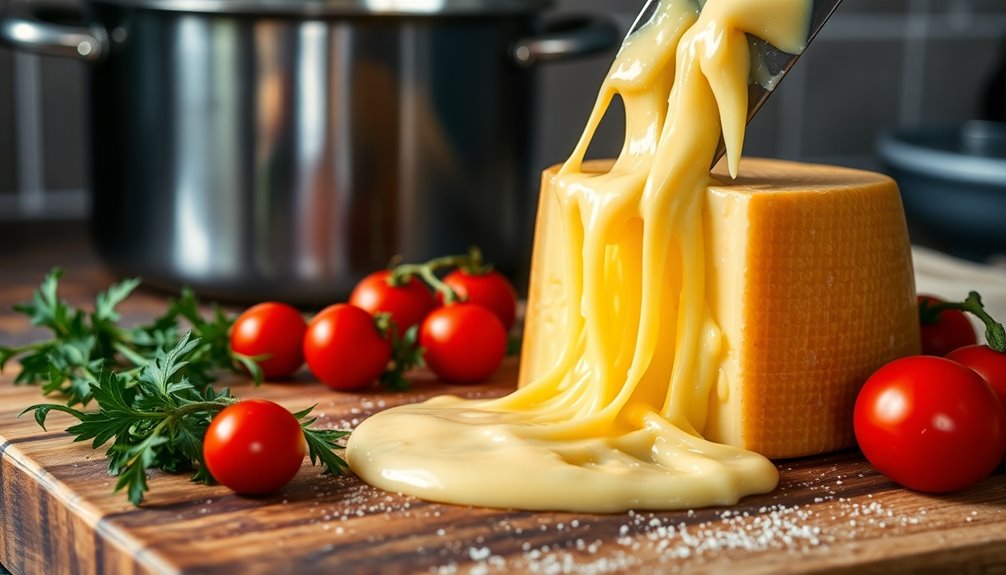
To get started with your Gouda dish, gather all your ingredients and tools.
Next, preheat the oven to 350°F to ensure everything bakes evenly.
Once you're ready, add the Gouda to your mixture and mix until smooth for a creamy, delicious result.
Step 1. Gather Ingredients and Tools
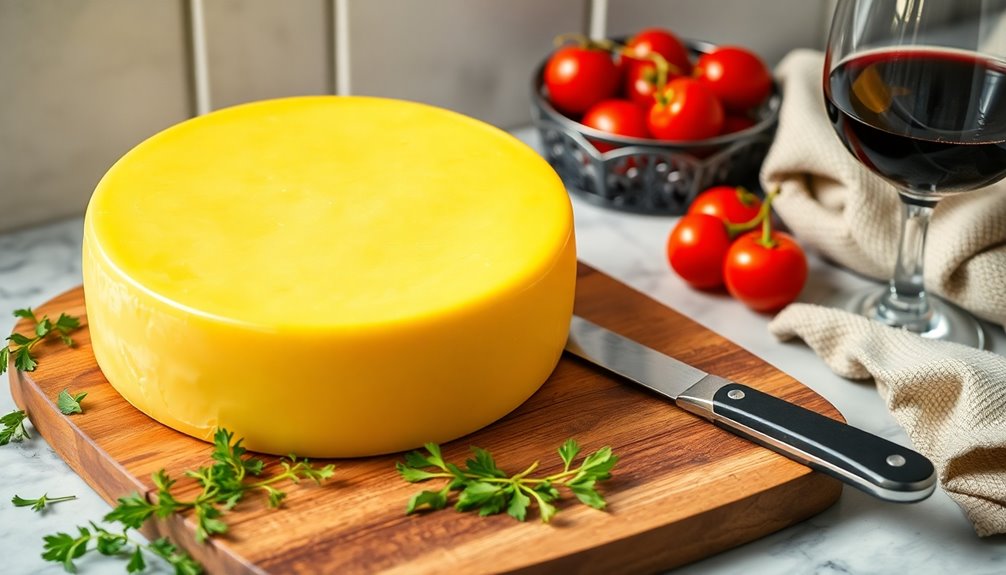
Before diving into the cheese-making process, you'll want to gather all the necessary ingredients and tools.
For making Gouda, you'll need fresh cow's milk, natural bacteria, and rennet to coagulate the milk and form curd. A large cheese vat is essential for heating the milk, while a mold will help shape the curd after cutting and pressing.
Don't forget to prepare a brine solution; it's crucial for soaking the formed cheese, enhancing its flavor and texture.
You'll also need cheese wax or a plastic-like coating to protect the cheese during aging, preventing it from drying out.
Lastly, a thermometer is vital for monitoring the milk temperature, ensuring optimal conditions for curd formation and aging.
Step 2. Preheat the Oven to 350°F
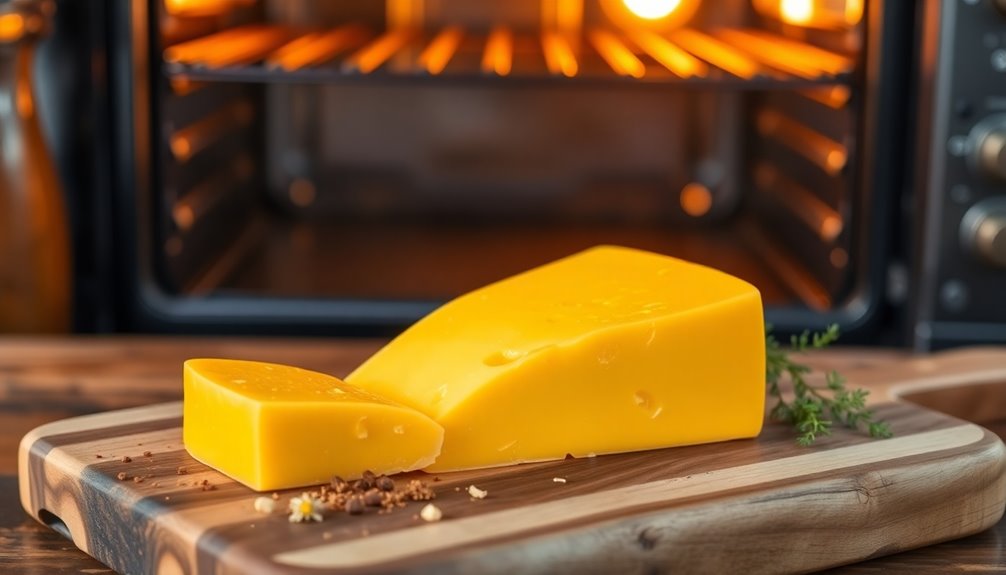
Preheating your oven to 350°F is a crucial step for achieving the perfect melt and flavor when using Gouda cheese in your recipes. This temperature ensures even cooking and optimal texture, allowing your Gouda cheese to melt smoothly while enhancing its creamy richness.
If you skip this step, the cheese may become oily or separate during cooking, ruining your dish. It's also wise to check your oven's accuracy with a thermometer, as an incorrect setting can affect your final result.
Before baking, let the Gouda cheese sit at room temperature for about 30 minutes. This simple action helps it melt uniformly, further elevating the taste and texture of your casserole or baked dish featuring Gouda cheese.
Step 3. Add Gouda to Mixture

Adding Gouda cheese to your mixture elevates both flavor and texture, creating a deliciously creamy base for your dish.
When you choose Gouda cheese, think about its age; younger Gouda offers a mild flavor, while aged Gouda brings a richer, caramel-like taste.
For sauces or soups, grated Gouda melts smoothly, thanks to its high butterfat content.
If you're baking, blend Gouda into savory pastries or casseroles, where its nutty flavor pairs beautifully with ingredients like spinach or mushrooms.
For a gooey grilled cheese sandwich, use slices of Gouda with hearty bread or grilled veggies.
You can also cube Gouda cheese for cheese boards or salads, where it harmonizes with fruits like apples and grapes, enhancing your dish's overall appeal.
Step 4. Mix Until Smooth
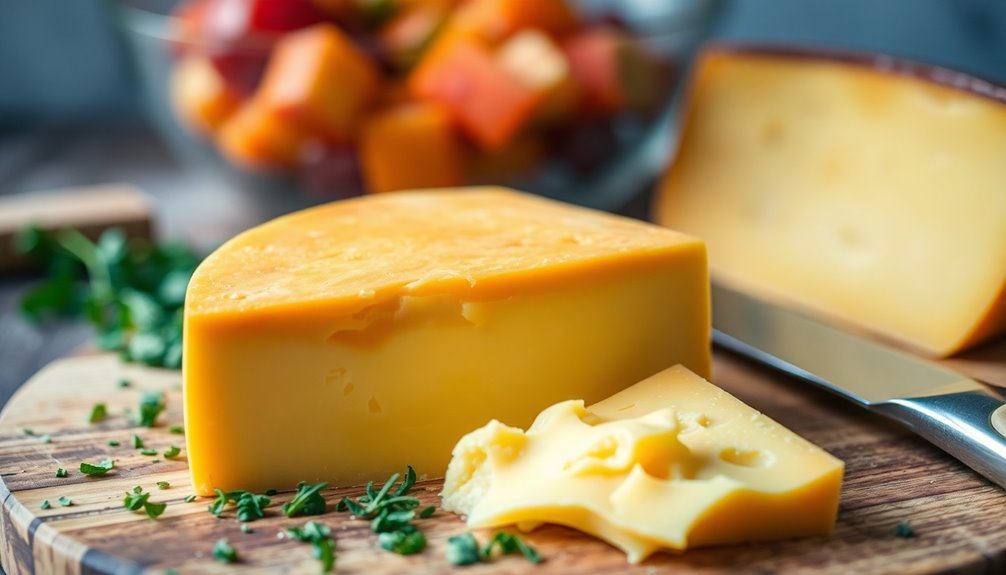
Achieving a smooth and creamy blend with Gouda cheese is essential for your dish's success. Start by ensuring your Gouda cheese is at room temperature; this makes it easier to mix. If you're making a sauce, grate or shred the cheese to help it melt uniformly.
For fondue, consider mixing Gouda with other melting cheeses like Gruyère for a delightful balance. Remember to stir continuously over low heat to prevent clumping and to ensure even melting.
When incorporating Gouda cheese into soups or casseroles, add it gradually, mixing thoroughly after each addition. This will help you achieve that rich, creamy finish you're aiming for, making your dish truly irresistible.
Enjoy the creamy goodness of Gouda cheese!
Step 5. Bake for 20 Minutes
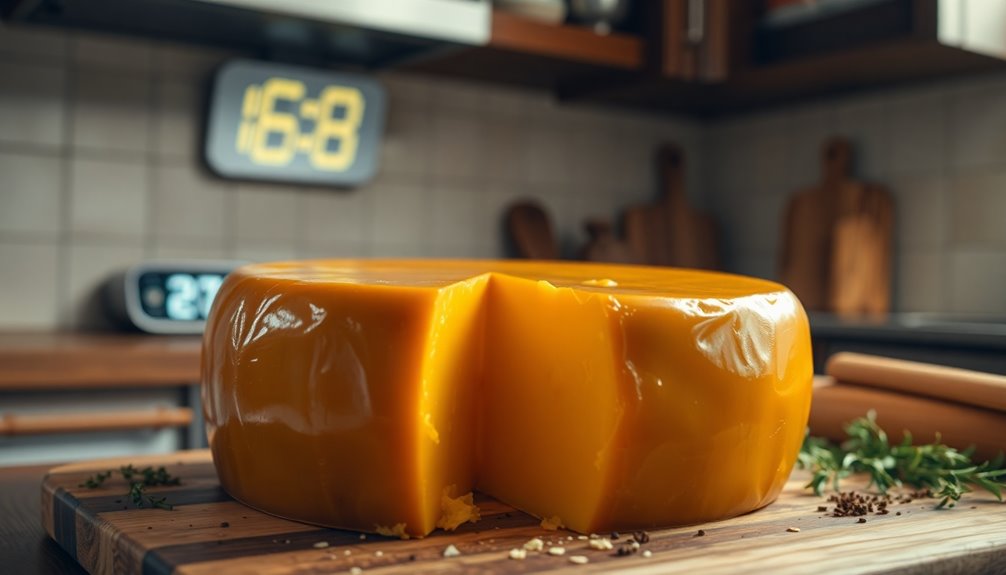
To get the perfect baked Gouda dish, start by preheating your oven to the desired temperature.
Next, arrange the Gouda cheese in a suitable baking dish, evenly distributing it for consistent melting and browning.
Once your oven is ready, place the dish inside and bake for approximately 20 minutes.
Keep an eye on it; the cheese should become bubbly and develop a golden-brown top, signaling it's thoroughly heated.
To ensure safe consumption, check the internal temperature—it should reach at least 165°F (74°C).
After baking, let the dish cool for a few minutes.
This step enhances the flavor and texture, making your Gouda cheese experience even more delightful.
Enjoy your delicious creation!
Final Thoughts
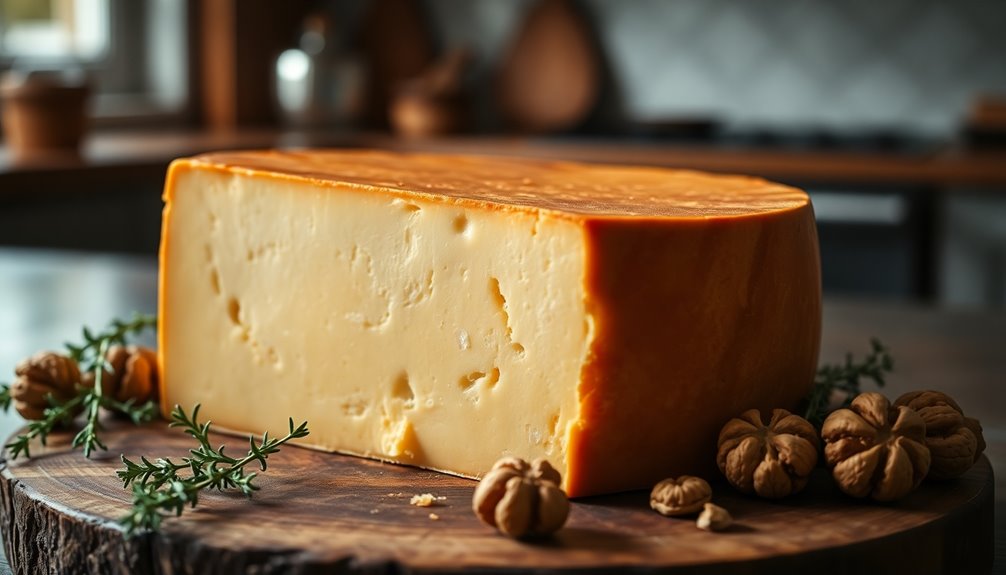
Although Gouda cheese has a rich history and diverse flavor profiles, it remains a beloved choice for cheese lovers worldwide.
This Dutch Gouda, with its semi-hard texture, offers a delightful range from mild and creamy in younger varieties to rich and caramel-like as it ages. The meticulous production process, including curd washing and brining, ensures a consistent quality you can appreciate.
With a moisture content of 40%-50% and fat content between 20%-40%, it delivers a creamy mouthfeel that enhances any dish.
Whether you're enjoying it on a cheese board, in a grilled cheese sandwich, or melted into your favorite recipe, Gouda cheese is incredibly versatile.
Embrace its authenticity and flavor, and elevate your culinary creations with this delightful cheese.
Frequently Asked Questions
What Is Gouda Cheese Best For?
When you're looking for a versatile ingredient in your cooking, you'll find it's perfect for a variety of dishes.
You can melt it in fondue, use it in burgers, or even incorporate it into vegetable recipes.
It also pairs wonderfully with fruits on a cheese board, enhancing both sweet and savory flavors.
Plus, its distinct nutty profile complements various wines, elevating your dining experience to a whole new level.
Which Cheese Is Better, Gouda or Cheddar?
When you think about a cheese duel, it's like choosing between two timeless legends.
Deciding whether Gouda or Cheddar is better really depends on your taste. If you crave a creamier, sweeter profile, you might lean towards Gouda.
But if you prefer a sharp, tangy bite, Cheddar's your go-to. Each cheese shines in its own right, so why not enjoy both?
After all, life's too short to limit your cheese choices!
Is Gouda the Healthiest Cheese?
When it comes to cheese, you're likely wondering if Gouda is the healthiest option.
While it offers a rich nutrient profile, including protein, fats, and calcium, it really depends on your dietary needs.
Gouda's lower lactose levels make it easier on some stomachs, and its vitamins support overall health.
However, balancing it with other nutrient-dense foods is key, and you should consider your specific health goals before choosing your cheese of choice.
What Cheese Is Gouda Similar To?
When you're exploring cheeses similar to Gouda, you'll find Edam cheese is a popular choice. Both have a semi-hard texture and mild flavor, but Edam's slightly firmer.
Gruyère also stands out, offering a nutty complexity that pairs well in fondue. If you're looking for creaminess, Havarti's a great option, while Comté provides a sweet, nutty taste.
Finally, consider Jarlsberg, which has a unique texture and flavor with those characteristic holes.
